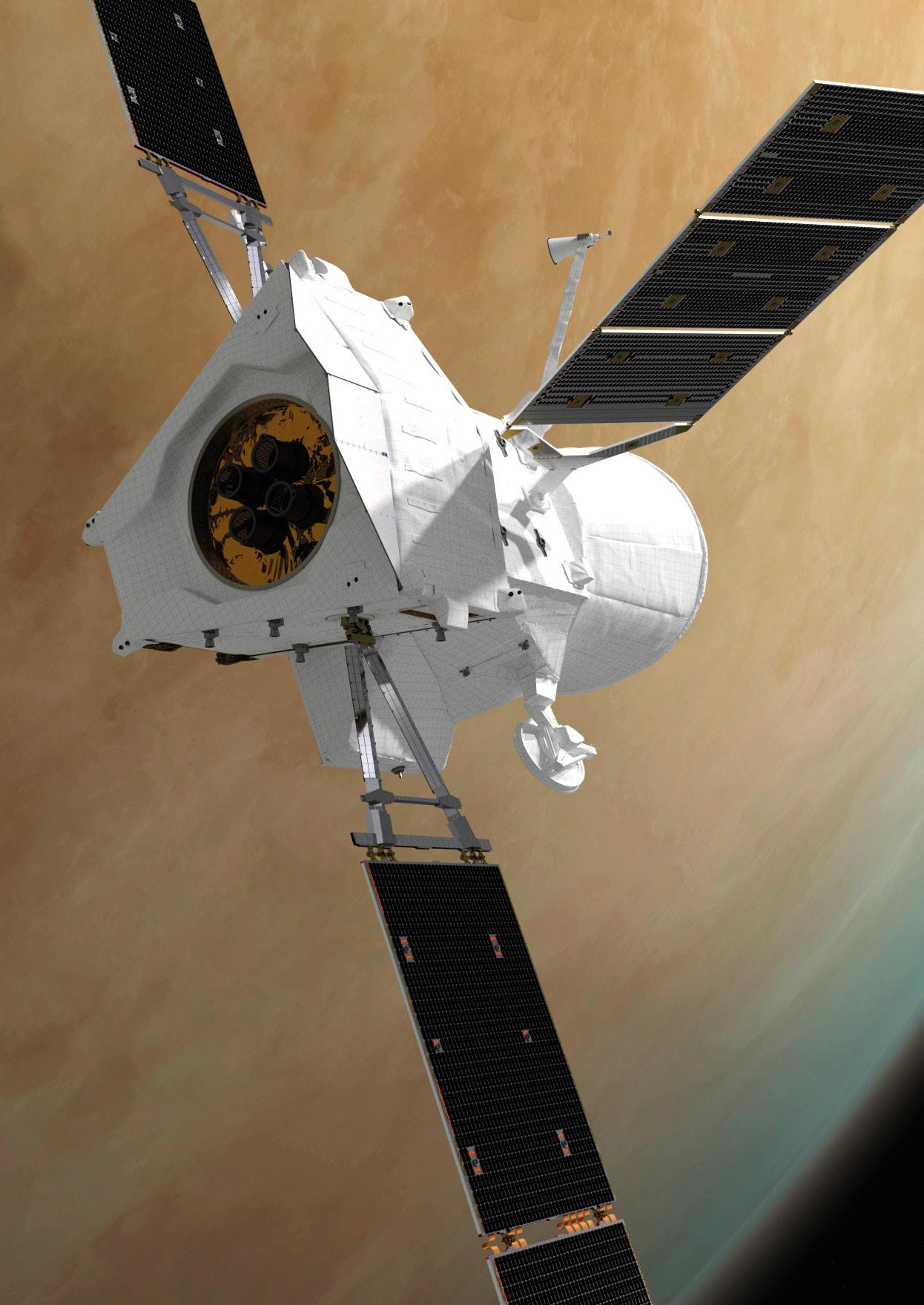
5 minute read
Mission (im)possible
Calculating the most economical and ecological routes through space – making the most of the ‘downhills’ to enable previously impossible missions – is the focus of a specialised team at the University of Southampton.
Space exploration is limited by fuel. When missions set off from Earth, they must carry all the fuel they require. That can often amount to over 90 per cent of their total weight, severely limiting the amount of scientific and exploratory equipment that can be carried.
Scientists within the Astronautics Research Group are addressing this challenge. By calculating and following natural dynamics in space, missions can be designed to require significantly less fuel.
Dr Alexander Wittig, Associate Professor in Astronautics, is an expert in orbital mechanics, and mission design and analysis. His work on theoretical mission designs demonstrates the possibilities of space travel.
“We figure out the manoeuvres a spacecraft has to perform in space to go to where it needs to go – a bit like providing a sat nav for a spacecraft,” he explained. “When we design these missions, we try to find a way to use as little fuel as possible. Sustainability is crucial, not just for ecological reasons, but simply to make space missions possible. Because there are no gas stations in space, spacecraft have to carry all their fuel with them. The more fuel you need, the less of everything else, such as cameras and sensors, you can take. It’s a problem that can easily make some interesting missions impossible.”
Natural dynamics
Space travel is much more complicated than driving on a 2D surface, as on Earth.
“We try to design missions that use the natural dynamics of how things move in space – a bit like when you roll a car down a hill, it’s making use of the natural flow,” said Dr Wittig. “In space, that can involve flying very close to other planets because then you get a slingshot effect as the planet deflects the spacecraft, changing its course without any fuel being used.”

For example, the BepiColombo mission – a seven-year European Space Agency and Japan Aerospace Exploration Agency mission to Mercury, which launched in 2018 – is using this concept of bouncing around different planets in order to reach its destination.
Dr Wittig and his team use mathematical concepts from Dynamical Systems Theory to calculate where ‘interplanetary highways’ are. They are developing a method to automatically classify which trajectories are useful for mission planning.
He outlined: “If you flew to Venus, for example, you would first need to do a huge manoeuvre near the Earth, requiring a lot of energy, to overcome its gravity. Then upon arrival you’d have to get rid of all that momentum by putting the brakes on, or you will just shoot on past Venus – this requires almost the same amount of energy again. We’re working on finding a trajectory where that’s not necessary. It’s called ballistic capture, where you make clever use of the intricate effect of the Sun to achieve a temporarily captured orbit around another planet via natural dynamics. We’re developing the mathematical description and tools underpinning this process.”
This work will enable cheaper and more feasible space missions in the future, as much less fuel will need to be carried.
Deorbiting safely
Dr Wittig’s research is already being put to practical use through a collaboration with Dr Minkwan Kim, also Associate Professor in Astronautics, on a project called Cube de ALPS (CubeSat de-orbit ALI-printed Propulsion System).
Dr Kim has designed and built a deorbiting propulsion system for CubeSats (miniature satellites that are used for space research). The system – known as a ‘vacuum arc thruster’ – provides a tiny amount of thrust, equivalent to the weight of a feather, but over long periods of time. Together with the right mission design, this enables the safe and controlled removal of CubeSats from busy orbits.
“We’re working on simulating how to use that tiny thrust to deorbit satellites, and also to stop them from spinning so fast, which could result in them breaking up or damaging other satellites,” said Dr Wittig. “We have an upcoming mission ready to launch in December 2022, where we will put one of these vacuum arc thrusters on a satellite and study how it affects the satellite. This allows us to confirm and calibrate our simulations and adjust the mission profile accordingly.”
Once completed, the deorbiting propulsion system will reduce the deorbiting timescale of CubeSats flying 800 kilometres above Earth’s surface from over 100 years to about two years.
Dr Wittig added: “We are working on developing the system to be like a foil sticker that can go on the side of a satellite. It’s innovative from a manufacturing perspective because we’re printing many of the electronic components onto a flexible substrate. That makes the system cheap and easy to produce and customise based on specific satellite design needs.”

Artist’s impression of BepiColombo flying by Venus. Image courtesy of ESA










